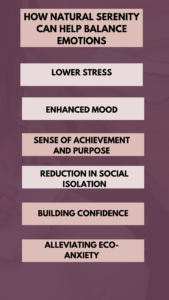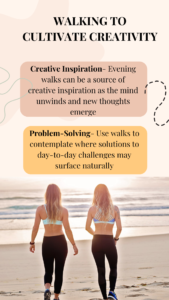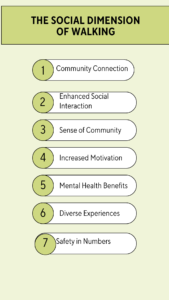How to walk more in the evening to combat insomnia in women going through menopause? As the sun dips below the horizon, casting a warm glow on the quiet streets, an opportunity often goes unnoticed—a chance to enhance our sleep quality. For women over 40 navigating the tumultuous waters of menopause, sleep disturbances can feel like unwelcome companions. The restless nights, the midnight awakenings, and the elusive return to slumber—it’s a cycle that leaves us yearning for a restful reprieve.
But what if the solution lies in something as simple as slipping on comfortable shoes and stepping out for an evening walk? But the question simmers in busy minds: how to walk more in the evening? How can we, against the tides of our hectic lives, carve out these moments of peace? In this comprehensive guide, we’ll journey through the hows and whys of walking more in the evening, unlocking the secrets to mastering the evening stroll for a night of blissful sleep.
The Science of Strolling for Sleep
An evening walk can be a simple yet effective way to improve sleep quality, especially for women over 40. Let’s delve into the scientific reasons that make this activity beneficial for a good night’s rest.
Understanding the Link Between Walking and Sleep
Walking, especially in the evening, can help synchronize your body’s natural sleep-wake cycle, also known as the circadian rhythm. Regular walks can also reduce stress and anxiety, which are common culprits behind insomnia.
Circadian Rhythm Synchronization
Sunset and Melatonin: Exposure to the dimming light at sunset during walks can signal the body to produce melatonin, aligning the circadian rhythm with natural sleep cycles.
Temperature Regulation: The body’s core temperature naturally drops in the evening, and walking can enhance this process, signaling it’s time to sleep.
Understanding Sleep
Before diving into the benefits of the evening stroll, let’s take a brief look at the science of sleep. Sleep occurs in cycles, consisting of four stages: NREM (non-rapid eye movement) stages 1, 2, and 3, followed by REM (rapid eye movement) sleep. Each stage plays a crucial role in restoring both the body and the mind.
The Role of Physical Activity in Sleep Regulation
Exercise and Sleep Hormones: Physical activity, such as walking, has been shown to regulate hormones like melatonin, which are crucial for sleep.
Stress Reduction: Evening walks can decrease cortisol levels, reduce stress, and promote relaxation before bedtime.
Psychological Benefits of Evening Walks
Mindfulness and Decompression: Walking allows for a meditative state, helping to clear the mind of daily stresses.
Reflection and Anticipation: Walking provides a transition period from the day’s activities to the anticipation of restful sleep.
Environmental Influences on Sleep
Connection with Nature: Being outdoors can increase one’s connection to the natural environment, which is linked to better sleep patterns.
Sensory Stimulation: The sights, sounds, and smells experienced during an evening walk can be calming, preparing the mind for sleep.
Incorporating evening walks into your routine can be crucial to managing sleep disturbances commonly experienced during menopause. By understanding the science behind this practice, you can optimize your evening routine to embrace the full spectrum of relaxation benefits and enhance your overall well-being.
Creating Your Evening Walk Schedule
As dusk drapes its cloak over the day, it signals a time to slow down, a natural period for reflection and calming the spirits. Identifying the perfect time to lace up and step out is your first step to embracing the evening’s tranquility. Some find that a walk right after dinner aids digestion and ushers in a sense of solace; for others, an hour before bed is the sweet spot, setting the stage for a night of deep slumber.
Embracing the Challenge—Even on Manic Mondays
It might seem daunting to incorporate an evening walk into an already packed schedule, but remember, amidst the chaos, there is a simple and effective remedy: the evening stroll. It’s not about carving out a huge chunk of time; it’s about making the time you have count. Strive to begin with fifteen minutes; you’ll soon find it becomes a highlight, a time you protect fiercely against the encroachment of life’s relentless demands.
Essentials for a Rewarding Evening Walk Experience
Before you embark on your twilight trek, don the right attire—something lightweight and reflective for safety yet cozy enough to shield against the night’s chill air or a small flashlight to ensure you’re visible to others. Pay attention to the rhythm of your body, as experienced walkers widely recognize that on certain evenings, your strides exude liveliness and vigor, while on others, they adopt a more tranquil and reflective pace. Allow yourself to sync with the tempo nature sets for you.
The Right Footwear: Your Faithful Companions
Consider your shoes as trusty companions on your evening quest; they should offer support and comfort with every step you take on the path to restful nights. Don’t skimp on this—your feet are the foundation of your stroll, after all.
Forward Planning: Preparing for Regular Evening Walks
With the stage set for your evening saunters, prepare in advance to repel any excuses that may arise. Have your walking gear ready, craft a playlist of soothing tunes or enthralling podcasts, and plan your route to ensure your mind is already mid-walk as you tie your laces.
Listening to Your Body: Pace and Distance Considerations
Start at a pace that feels more like a therapeutic caress than a punishing race—one foot in front of the other, steadily and without hurry. As you walk, breathe in the evening’s freshness; let it cleanse the day’s weight off your shoulders, and exhale the fatigue that’s clinging stubbornly to your frame. Distance is not the dictator here; it’s all about the rhythm and the ritual.
Heightening Awareness: Walking Mindfully
During your walk, heighten your senses. Feel the breeze as it dances across your skin, and watch the sky morph through a palette of pastels as night ascends. Be present in the journey; it’s not just about movement but also about the experience—the transition from daytime bustle to nighttime tranquility.
Focus on your breathing, engage your senses, and let go of any lingering stress or tension as you meander along your chosen path.
Seamlessly Integrating the Evening Stroll into Your Lifestyle
The buddy system isn’t just a clever ploy of youthful school days; it’s a fantastic way to cement your evening walk habit. A friend or family member who shares your strolling goals can be a tremendous source of motivation—accountability with a smile, you might say.
Elevating Your Evening Walk Routine
Once the habit is formed, it’s time to introduce new chapters to your story. Set progressively stretched goals; consider charting routes that offer new sights, lifting your spirit with natural wonder. Switch it up—the world is a mosaic of paths awaiting your footprints. Let the adventurous part of your soul lead once in a while. Or, occasionally, switch up the tempo, challenging your body and reinvigorating your mind.
Sharpening Your Resolve
On sultry evenings, when lethargy clings to you like humidity, remind yourself why you started. Think of the serene sleep that awaits, and let that vision propel you out the door.
Routine Integration Tips
Pre-Walk Relaxation: Engage in light stretching or yoga before your walk to prepare your body.
Post-Walk Wind Down: Follow your walk with a calming activity, like reading or taking a warm bath.
Setting Gradual Goals for Progress
Variety is not just the spice of life; it’s the flavour enhancer for your walks. Introduce intervals into your stroll, short bursts of increased pace followed by leisurely recovery. These can be unexpectedly invigorating and can dial up the joy in every step.
Gamification: As your evening walks become second nature, challenge yourself with gradual increments in distance or pace. Turn your walking routine into a game with challenges and rewards to keep motivation high. I always aim to beat my walking time. Now, I walk a mile in 10 minutes, a significant achievement.
While the primary aim of the evening stroll is relaxation, incorporating light exercise into your routine can also be beneficial. Gentle movements, such as stretching or yoga poses, can help release any remaining tension in your muscles and promote a sense of calmness.
Tech Integration: Use apps that allow you to set reminders, track progress, and even simulate walking in different parts of the world.
Celebrate each milestone, rewarding yourself for the commitment to your health and the sacredness of your nightly ritual.
The Role of Community in Routine Maintenance
Social Commitment: Make plans to walk with a friend or join a walking group to increase accountability.
Virtual Check-Ins: In the era of social media, sharing your walking journey online after the event can provide a sense of community and support.
Adapting to Life’s Changes
Flexibility: Be prepared to adapt your walking routine to life’s inevitable changes, maintaining the habit even when circumstances shift.
Mindset Shift: View your walking routine not as a chore but as a cherished part of your day that brings peace and wellness.
Addressing Common Concerns
It’s natural to have reservations when adopting evening walks to beat insomnia. Let’s address these concerns thoughtfully and provide solutions that are often overlooked.
Safety First: A New Approach
Safety is a prime concern, especially for women walking alone at night. Beyond the usual advice, let’s explore innovative ways to stay safe.
Provocative Thoughts
Tech-Assisted Safety: Use safety apps that share your location with trusted contacts and have an easy-to-access alarm.
Community Walks: Organize community evening walks that provide safety in numbers and foster social connections.
Overcoming the Fear of Overstimulation
The concern that evening exercise might lead to overstimulation and thus hinder sleep is common. However, walking is a low-impact activity that, contrary to popular belief, can aid in the transition to a restful state.
Conclusion
Every evening walk is a narrative with its beginning, middle, and end. As we lace up, we turn the first page, setting forth into the fading day. We find rhythm in our strides under the moon’s benevolent gaze. And when we return, closing the door on the whispered secrets of the night, we are a step closer to peaceful dreams. How to walk more in the evening? The question becomes a whispered promise, a commitment to the sweet surrender that is the evening stroll, under the canopy of stars, to the sanctuary of sound sleep. Embrace the evening, one step at a time, and sleep, that elusive minx, will court you as fervently as you court your evening pilgrimages under the watchful eyes of the nocturnal heavens.
FAQs
1. How long should my evening stroll be for optimal sleep benefits?
Aim for a leisurely walk of around 20 to 30 minutes to reap the relaxation and stress-reducing benefits without overstimulating your body.
2. Can I listen to music or podcasts during my evening stroll?
While some gentle background music or calming podcasts may enhance your stroll, opt for nature sounds or instrumental music to avoid overstimulation.
3. What should I do if I’m unable to go for an evening stroll due to weather or other constraints?
In such cases, consider indoor alternatives such as gentle stretching, yoga, or deep breathing exercises to promote relaxation and prepare your body for sleep.
4. Is it okay to eat a snack before bedtime if I feel hungry after my evening stroll?
If you’re hungry after your stroll, opt for a light, easily digestible snack such as a small piece of fruit or a handful of nuts to satisfy your hunger without disrupting your sleep.
5. Will mastering the evening stroll help me fall asleep faster?
While individual results may vary, incorporating the evening stroll into your nightly routine can help relax your body and mind, making it easier to fall asleep and achieve deeper, more restorative rest.


